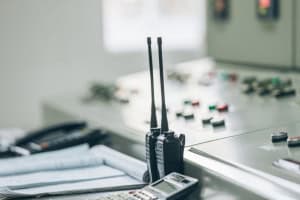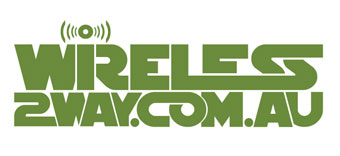Long-Range Two-Way Radios: Essential Tool for Remote Communication
In a world of connectivity, the availability of an efficient communication tool is crucial, especially in a remote setting. Long-range Two-Way Radios have become the answer for outdoor enthusiasts, rescue teams, and professionals working in remote areas, giving them a reliable source of communication.
It works over numerous distances that the traditional cell phone cannot attempt due to dependence on network coverage.
Are you ready to challenge the dead zones and know how reliable communication does wonders in those areas, this blog will walk you through the significance of long-range two-way radios.
It will include the critical selection factors to consider when finding the right gadget for your needs, ensuring connectivity in remote locations. So, let’s get going.
Long-Range Two-way Radios
Long-range two-way radios enable effective voice transmission for long-distance communication. They are used on numerous operating frequency bands, including VHF and UHF, and are also capable of providing clear communication at challenging locations.
Most of them are equipped with advanced technologies like digital signal processing and noise cancellation to produce extraordinary audio quality.
For instance, these radios have been utilised in construction and security outdoor activities where immediate communication is required among team members. Other features include weather resistance, multi-channels, and long-lasting batteries for use in diverse conditions.
Also read: Two-Way Radios: The Ultimate Communication Tool in High-Risk Industries
Benefits of Long-Range Two-Way Radios in Remote Areas
There are several reasons why they are given priority in areas where communication gets difficult otherwise;
No Signal Dependency
You may need help to obtain a stable cellular signal in remote areas. Long-range two-way radios are an independent mode of communication whose power transcends other external networks. It works on frequency bands so even if you are miles away, you can still reach each other.
Extended Communication Range
Many of the contemporary two-way radios can transmit signals over a few miles. In one sense, some models have allowed a range of up to 50 miles in open terrain, which may give the users a sense of security when venturing into the wilderness.
The increased range now makes it possible for a team of hikers, campers, or others working in a remote location to coordinate effectively.
Whether rain, mud, or temperature extremes are factors, these devices often feature sturdy casings and withstand the elements, so they work in even the most demanding outdoor conditions.
Emergency Communication
In emergencies, communication can be a matter of life and death. Long-range two-way radios usually offer the feature of an SOS signal that users can utilise to transmit distress signals at their discretion.
This device aspect is crucial for hikers and campers who tend to venture out to remote areas where help would be many miles away and for employees in isolated areas.
Some models have NOAA weather alerts, which provide the latest reports about hazardous weather conditions. Such a feature is quite important for outdoor activities, as it permits users to acquire storm warnings, flood warnings, or any other dangerous weather so that they can prepare for it.
Group Coordination
Long-range radios allow team members to communicate promptly and effectively. This is crucial in search and rescue operations or group activities where timely coordination may determine the outcome.
Long-Range Two-Way Radios for Effective Remote Communication
Let’s understand, which features of two-way radios make them effective for remote communication.
Range and Frequency
The coverage and frequency bands it uses also determine the type of two-way radio. Two-way radios make use of either VHF or UHF bands.
- VHF: VHF radios are suitable for open areas where signal transmission is achieved at more extensive distances. It proves to be extremely useful when there is a need for a system in outdoor locations with fewer obstructions.
- UHF: These radios are effective in cities and pass through obstructions clearly like buildings and trees. They are mostly used in crowded places.
Battery Life
In remote areas, you would have fewer sources of batteries; thus, in this case, the most important thing is a radio with long-lasting batteries. Long-lasting batteries allow for extended usage, making them ideal for long expeditions and emergencies.
There are two major categories of batteries as mentioned below;
Types of Batteries
- Rechargeable Batteries: Most radios use these rechargeable lithium-ion batteries which can be used several times. A means of recharging the batteries must be carried on, either a solar charger or a power bank while venturing far from power sources.
- Disposable Batteries: Some come in standard alkaline or ordinary disposable forms and most users like models that work on standard AA or AAA batteries. They are readily available so if replacement is needed in the field, it is not a problem. They do not last long though compared to a good rechargeable one.
Battery Capacity
Radios with high mAh, indicate longer usage times. Knowing a strong battery capacity ensures that you are not cut off when power runs out is worth its weight in gold.
Durability and Build Quality
Many two-way radios are specifically designed for remote activities and have casings and sealing against the weather that can stand up to much outdoor use.
Water and Dust Resistance
Radios that are equipped with IP ratings have protection against water and dust ingress. For example, a rating of IP67 means that the device is protected against immersion in water up to 1 meter for some duration, so it should be fine for rainy or wet conditions.
Shock Resistance
The shock resistance feature is especially important to those who would be in situations where they may on occasion fall while running with their device.
Audio Quality Counts
As far as the attributes identified above are concerned, audio quality cannot be excluded either. Clear and clean transmission of sound messages should be considered as far as the effectiveness of communication is concerned, more so in distant environments.
Among the features that may be of interest, for this reason, are noise-cancelling technologies, good speakers, and volume controls that make it possible for the message not to distort, even in busy areas.

End Note
To anyone who ventures to remote areas, long-range two-way radios are of extreme importance. They not only offer the most reliable source of communication but also feature in-built safety features that cellular devices often lack, including top-notch durability.
When using a radio, factors like range, battery life, durability, and added features play a significant role. A dependable long-range two-way radio can be crucial for maintaining communication in critical situations and challenging environments.



